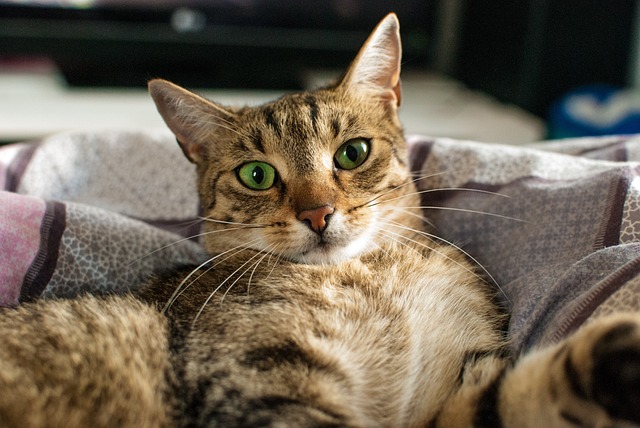Introduction: Cats, with their enigmatic gaze, perceive the world in a unique way, finely tuned to their hunting instincts and nocturnal activities. While some similarities exist between feline and human eyes, there are distinct differences that shape their visual experience. This article delves into the fascinating realm of feline vision, shedding light on their extraordinary abilities.
Are Cats Color Blind? While cats can discern some colors, their spectrum of vision differs from ours. Much like color-blind individuals, they perceive less saturation in hues. It’s believed that domestic cats primarily register blue and green shades, with challenges distinguishing red from green.
Exceptional Night Vision: A cat’s proficiency in low-light and nighttime environments is a testament to its natural hunting prowess. The presence of elliptical pupils, unlike the round shape in humans, allows for rapid dilation and contraction. This adaptation, coupled with the tapetum lucidum—a reflective layer behind the retina—enhances light absorption, facilitating exceptional vision in dim conditions.
Motion, Depth, and Peripheral Perception: Cats possess an uncanny ability to detect even the slightest movements, an invaluable skill in hunting. Their capacity for rapid eye movement enables precise tracking of prey. With binocular vision, cats perceive depth, granting them a three-dimensional view of their surroundings. Although not as refined as human 3D vision, it grants them a keen sense of spatial awareness. Additionally, their protruding eyes provide an expansive field of vision—approximately 185 degrees, surpassing the human range of 120 degrees.
Nearsighted Acumen: Cats excel in close-range vision, outperforming their ability to see distant objects. Their visual clarity extends only to a few hundred yards, rendering the distant world a blur. Interestingly, cats encounter difficulties in seeing directly beneath their noses, a quirk that may explain their occasional struggles with close-range objects.
Visualizing the Feline Perspective: Artist Nickolay Lamm collaborated with veterinary ophthalmologists to craft visual representations comparing feline and human visual experiences. The results provide a captivating glimpse into the world as perceived by our feline companions.
The Perfect Fusion of Form and Function: In exploring feline vision, we uncover a marvel of nature—the cat’s eyes. Evolved for both aesthetic elegance and utilitarian purpose, they are a testament to the exquisite design that enables cats to navigate their world with finesse.
Understanding How Cats Perceive the World: A Glimpse into Feline Vision”
Introduction: Cats, with their enigmatic gaze, perceive the world in a unique way, finely tuned to their hunting instincts and nocturnal activities. While some similarities exist between feline and human eyes, there are distinct differences that shape their visual experience. This article delves into the fascinating realm of feline vision, shedding light on their extraordinary abilities.
Are Cats Color Blind? While cats can discern some colors, their spectrum of vision differs from ours. Much like color-blind individuals, they perceive less saturation in hues. It’s believed that domestic cats primarily register blue and green shades, with challenges distinguishing red from green.
Exceptional Night Vision: A cat’s proficiency in low-light and nighttime environments is a testament to its natural hunting prowess. The presence of elliptical pupils, unlike the round shape in humans, allows for rapid dilation and contraction. This adaptation, coupled with the tapetum lucidum—a reflective layer behind the retina—enhances light absorption, facilitating exceptional vision in dim conditions.
Motion, Depth, and Peripheral Perception: Cats possess an uncanny ability to detect even the slightest movements, an invaluable skill in hunting. Their capacity for rapid eye movement enables precise tracking of prey. With binocular vision, cats perceive depth, granting them a three-dimensional view of their surroundings. Although not as refined as human 3D vision, it grants them a keen sense of spatial awareness. Additionally, their protruding eyes provide an expansive field of vision—approximately 185 degrees, surpassing the human range of 120 degrees.
Nearsighted Acumen: Cats excel in close-range vision, outperforming their ability to see distant objects. Their visual clarity extends only to a few hundred yards, rendering the distant world a blur. Interestingly, cats encounter difficulties in seeing directly beneath their noses, a quirk that may explain their occasional struggles with close-range objects.
Visualizing the Feline Perspective: Artist Nickolay Lamm collaborated with veterinary ophthalmologists to craft visual representations comparing feline and human visual experiences. The results provide a captivating glimpse into the world as perceived by our feline companions.
The Perfect Fusion of Form and Function: In exploring feline vision, we uncover a marvel of nature—the cat’s eyes. Evolved for both aesthetic elegance and utilitarian purpose, they are a testament to the exquisite design that enables cats to navigate their world with finesse.



